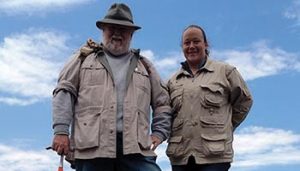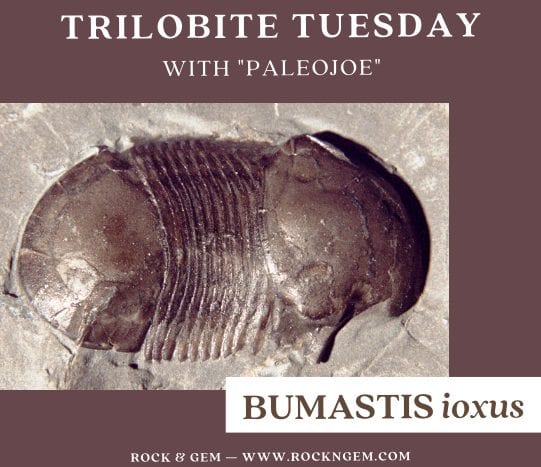By Joseph “PaleoJoe” Kchodl
The BUMASTIS ioxus trilobite was found in the United States during the digging of the Erie Canal. It was first discovered in 1839 in a gorge dug for the canal.
Being roughly oval in shape, it is difficult to judge which is the Cephalon and which is the pygidium at first glance. This trilobite is isopygious, meaning the head and tail are roughly the same size. Having only 8 to 10 body segments, the BUMASTIS method of enrollment is much like that of a clam closing: just folding over, thereby protecting itself from danger.
The head and tail sections are quite smooth. The middle lobe of the Cephalon is quite broad, and there are two larges eyes set back near the lateral corner. It is generally 1-2 inches long, but much larger specimens have been found measuring up to 4 inches.
DID YOU KNOW: Trilobites, an extinct form of arthropod related to insects, crabs, crayfish, and horseshoe crabs, are among the most prevalent invertebrates with hard body parts to appear during the Cambrian Period. These creatures are called trilobite due to the three distinct “lobes” running vertically through the body section.

About the columnist: Joseph “PaleoJoe” Kchodl is a paleontologist, educator, veteran, author, fossil dig organizer/guide, business owner, husband, father, and grandfather, and fossil fanatic. For decades, he’s spent hours in classrooms around the Midwestern United States and beyond, speaking to school children about fossils and fossil hunting. Visit his site to purchase fossils, contact PaleoJoe, visit www.paleojoe.com.
Plus, learn more about PaleoJoe and his daughter PaleoJen and their paleontology exploration partnership in an the article “Fueling a Passion for Paleontology“.

